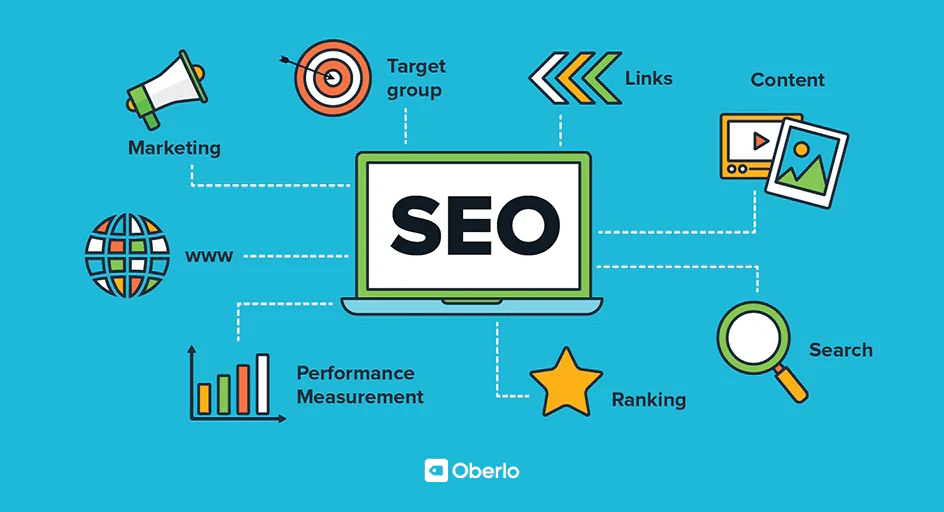
If you’re running a WordPress website and want more visibility on search engines like Google, you need a solid SEO (Search Engine Optimization) strategy. Fortunately, WordPress is one of the most SEO-friendly platforms out there—but only if you know how to use it to your advantage.
In this post, we’ll explore the best practices for optimizing your WordPress site for SEO, from technical tweaks to content strategies.
Why SEO Matters for WordPress Sites
Search engine traffic is often the largest source of traffic for websites. Ranking higher in search results means more visibility, more clicks, and ultimately more leads or sales.
WordPress gives you a great starting point with its clean code and flexibility, but you still need to actively optimize your site to stay competitive.
1. Choose a Solid SEO-Friendly Theme
Your WordPress theme affects how search engines read your site. When choosing a theme:
- Pick one that’s lightweight and fast
- Make sure it’s mobile-responsive
- Check that it’s compatible with popular SEO plugins
- Avoid themes that use outdated or bloated code
Popular SEO-friendly themes include GeneratePress, Astra, and OceanWP.
2. Use an SEO Plugin
SEO List plugins help you manage metadata, create sitemaps, and implement advanced SEO strategies without coding. The most popular ones are:
- Yoast SEO
- Rank Math
- All in One SEO Pack
These plugins let you optimize title tags, meta descriptions, canonical URLs, and even preview how your content looks in search engines.
3. Optimize Your Permalinks
Your URLs should be clean and keyword-rich. Avoid default URLs like:
yourwebsite.com/?p=123
Instead, go to Settings > Permalinks and choose Post name, so your URLs look like:
yourwebsite.com/seo-tips
This is better for both users and search engines.
4. Improve Site Speed
Site speed is a ranking factor. To boost performance:
- Use caching plugins like WP Rocket or W3 Total Cache
- Optimize images with tools like ShortPixel or Smush
- Choose fast hosting (SiteGround, WP Engine, or Kinsta are great options)
- Use a Content Delivery Network (CDN) like Cloudflare
5. Optimize for Mobile
Google uses mobile-first indexing, so your mobile site is just as (if not more) important than desktop. Make sure:
- Your theme is responsive
- Fonts and buttons are easy to use on smaller screens
- You test with Google’s Mobile-Friendly Test
6. Focus on Quality Content
Content is still king. Here’s how to make it SEO-friendly:
- Use keyword research tools like Ahrefs, SEMrush, or Ubersuggest
- Include your target keywords naturally in the title, headings, and body
- Add internal and external links
- Use schema markup (some SEO plugins can help with this)
- Keep content updated and relevant
7. Create an XML Sitemap
An XML sitemap helps search engines discover all your pages. Most SEO plugins will create this for you automatically. Just make sure it’s submitted to Google Search Console.
8. Use Categories and Tags Wisely
Categories and tags help organize your content, but overuse can hurt SEO. Best practices:
- Use categories for broad topics
- Use tags for specific keywords or subtopics
- Don’t create duplicate or thin tag/category pages
9. Monitor with Google Search Console & Analytics
These free tools are essential:
- Google Search Console helps track how your site performs in search and shows indexing issues.
- Google Analytics shows how users interact with your site.
Check both regularly to improve your SEO strategy.
10. Build Quality Backlinks
Backlinks remain a key ranking factor. To earn them:
- Write guest posts
- Get listed in directories
- Share your content on social media
- Reach out to influencers in your niche
Avoid buying links or using spammy tactics—they can get your site penalized.
SEO is not a one-time job—it’s an ongoing process. But with WordPress, the right tools, and consistent effort, you can dramatically improve your visibility in search engines.
Whether you’re a beginner or a seasoned pro, optimizing your WordPress website for SEO is one of the smartest investments you can make.
Smart Choice Ug is ready to help you on this journey.




